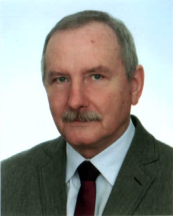
After graduation,Ryszard Gołdyn worked for 18 years at the Research Institute of Water Management and Environmental Protection. He mainly dealt with the problems of surface water protection, which constitute the intakes of municipal water supply systems. He was interested in changes in the quality of water in rivers and reservoirs, both under the influence of pollution coming from the catchment, as well as occurring as a result of water flow through dam reservoirs. His Ph.D was concerned the problem of changes in the river's phytoplankton, due to the flow of water through the cascade of 4 reservoirs. Since 1990, he moved to the University, where he first dealt with preliminary reservoirs built upstream of the main reservoir, to improve the water quality before entering the main reservoir. Then he changed his interests to the restoration of lakes. Because traditional methods of restoration were very expensive and often did not bring the expected results, he worked out together with his colleagues so-called sustainable restoration methods. They rely on little interference in the ecosystem using nature based solutions, so that the ecosystem gradually changes in the expected direction. The simultaneous use of several methods allows the elimination of feedback effects that try to preserve the previous state of the ecosystem. These methods are cheaper than traditional ones and allow maintaining a good ecological state of the lakes, despite the some pollution inflow from the catchment. It is important that the first effect of restoration is the elimination of cyanobacterial blooms, which are very dangerous for the economic use of water.
In his team there are specialists in phyto- and zooplankton, physico-chemical changes in water quality, macroinvertebrates, macrophytes, influence of bottom sediments on water quality (internal phosphorus loading), etc. Usually, they prepare a report on the functioning of the ecosystem, based on which protection and restoration methods are established. Then they monitor the impact of treatments on the ecosystem, assessing whether it proceeds properly or requires some changes. They are currently involved in research on 6 lake ecosystems undergoing restoration.
E-mail: ryszard.goldyn@amu.edu.pl